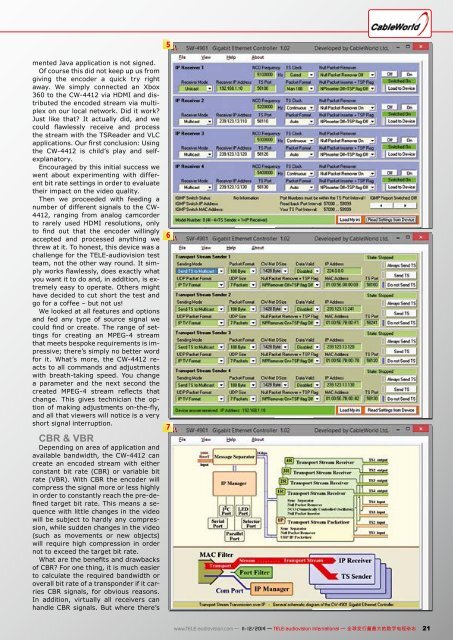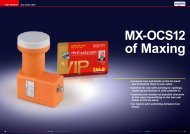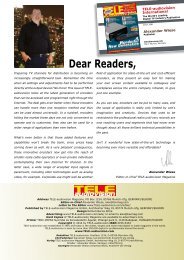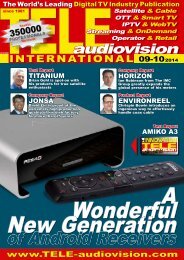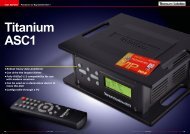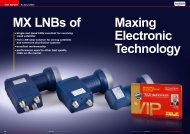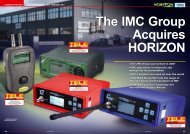eng TELE-audiovision 1411
The World’s Largest Digital TV Trade Magazine
The World’s Largest Digital TV Trade Magazine
Create successful ePaper yourself
Turn your PDF publications into a flip-book with our unique Google optimized e-Paper software.
5<br />
mented Java application is not signed.<br />
Of course this did not keep up us from<br />
giving the encoder a quick try right<br />
away. We simply connected an Xbox<br />
360 to the CW-4412 via HDMI and distributed<br />
the encoded stream via multiplex<br />
on our local network. Did it work?<br />
Just like that? It actually did, and we<br />
could flawlessly receive and process<br />
the stream with the TSReader and VLC<br />
applications. Our first conclusion: Using<br />
the CW-4412 is child’s play and selfexplanatory.<br />
Encouraged by this initial success we<br />
went about experimenting with different<br />
bit rate settings in order to evaluate<br />
their impact on the video quality.<br />
Then we proceeded with feeding a<br />
number of different signals to the CW-<br />
4412, ranging from analog camcorder<br />
to rarely used HDMI resolutions, only<br />
to find out that the encoder willingly<br />
accepted and processed anything we<br />
threw at it. To honest, this device was a<br />
chall<strong>eng</strong>e for the <strong>TELE</strong>-<strong>audiovision</strong> test<br />
team, not the other way round. It simply<br />
works flawlessly, does exactly what<br />
you want it to do and, in addition, is extremely<br />
easy to operate. Others might<br />
have decided to cut short the test and<br />
go for a coffee – but not us!<br />
We looked at all features and options<br />
and fed any type of source signal we<br />
could find or create. The range of settings<br />
for creating an MPEG-4 stream<br />
that meets bespoke requirements is impressive;<br />
there’s simply no better word<br />
for it. What’s more, the CW-4412 reacts<br />
to all commands and adjustments<br />
with breath-taking speed. You change<br />
a parameter and the next second the<br />
created MPEG-4 stream reflects that<br />
change. This gives technician the option<br />
of making adjustments on-the-fly,<br />
and all that viewers will notice is a very<br />
short signal interruption.<br />
CBR & VBR<br />
Depending on area of application and<br />
available bandwidth, the CW-4412 can<br />
create an encoded stream with either<br />
constant bit rate (CBR) or variable bit<br />
rate (VBR). With CBR the encoder will<br />
compress the signal more or less highly<br />
in order to constantly reach the pre-defined<br />
target bit rate. This means a sequence<br />
with little changes in the video<br />
will be subject to hardly any compression,<br />
while sudden changes in the video<br />
(such as movements or new objects)<br />
will require high compression in order<br />
not to exceed the target bit rate.<br />
What are the benefits and drawbacks<br />
of CBR? For one thing, it is much easier<br />
to calculate the required bandwidth or<br />
overall bit rate of a transponder if it carries<br />
CBR signals, for obvious reasons.<br />
In addition, virtually all receivers can<br />
handle CBR signals. But where there’s<br />
6<br />
7<br />
www.<strong>TELE</strong>-<strong>audiovision</strong>.com — 11-12/2014 — <strong>TELE</strong>-<strong>audiovision</strong> International — 全 球 发 行 量 最 大 的 数 字 电 视 杂 志<br />
21


